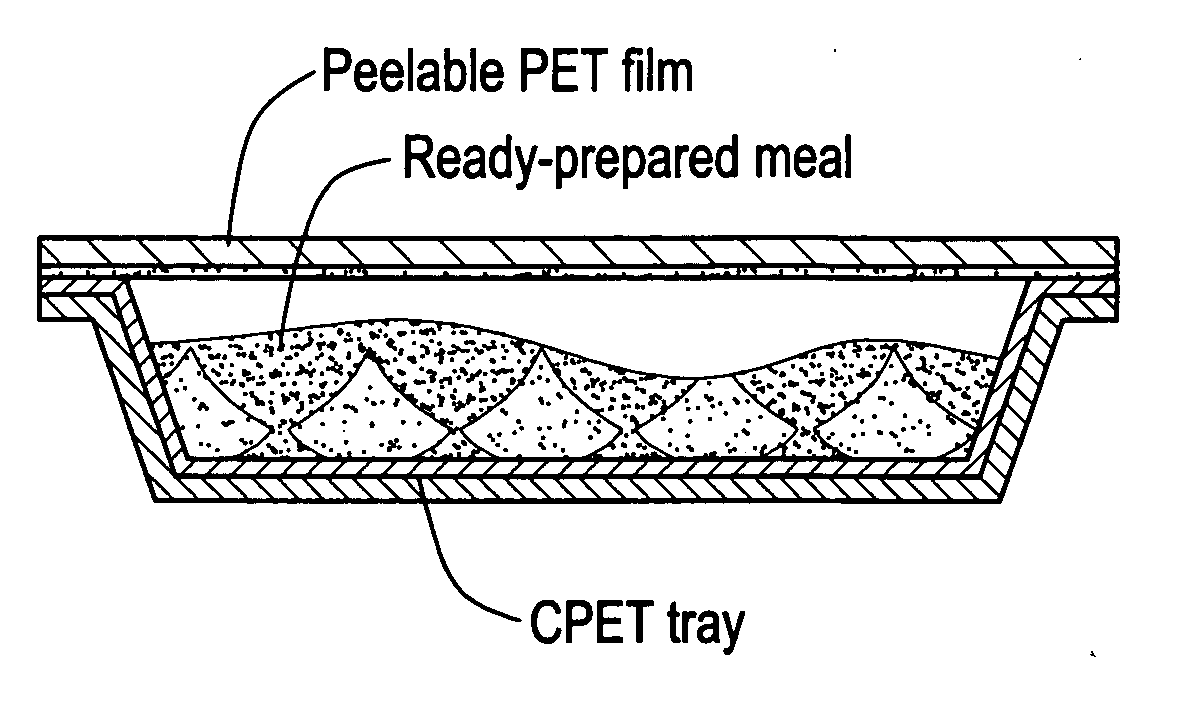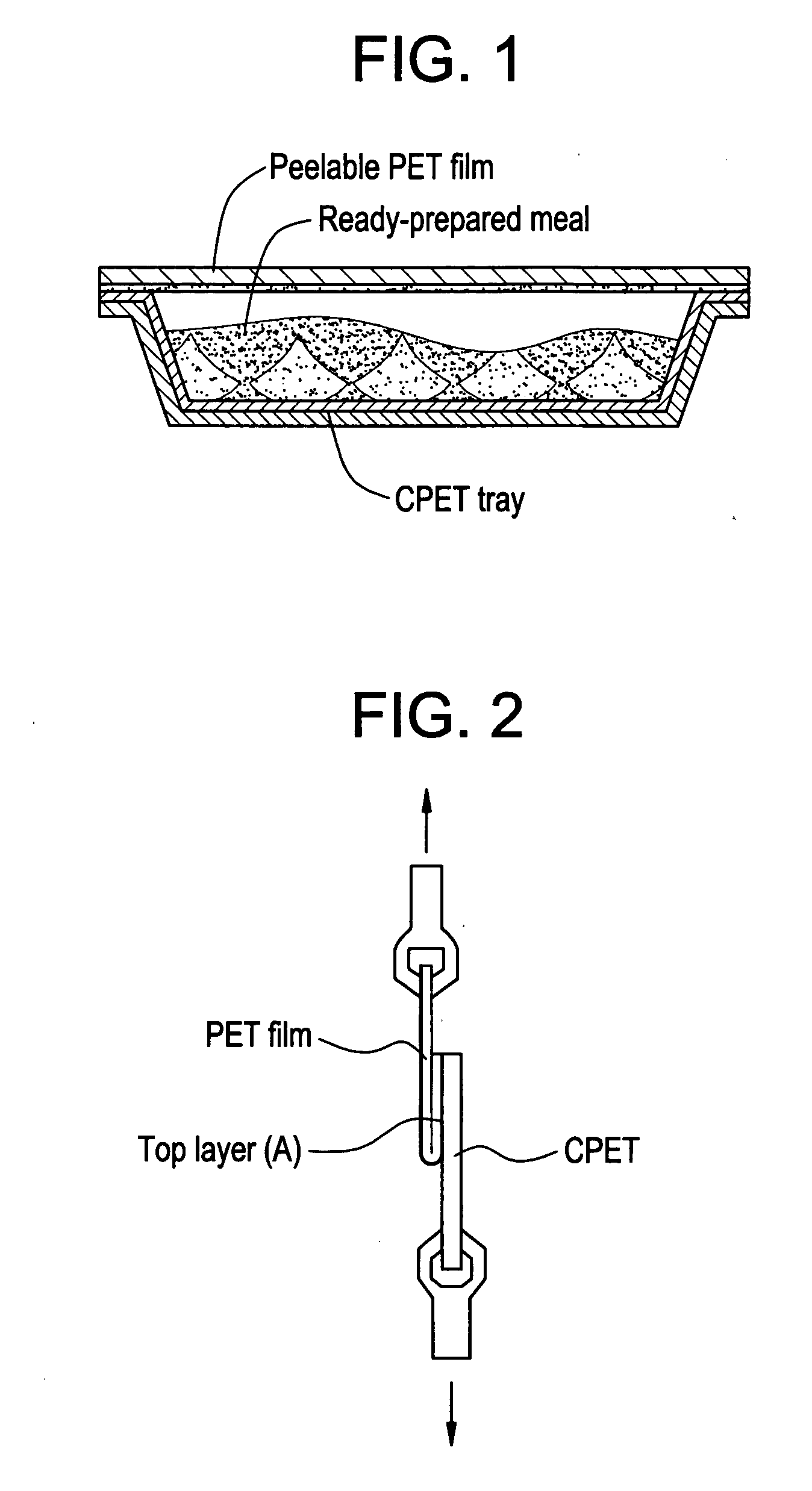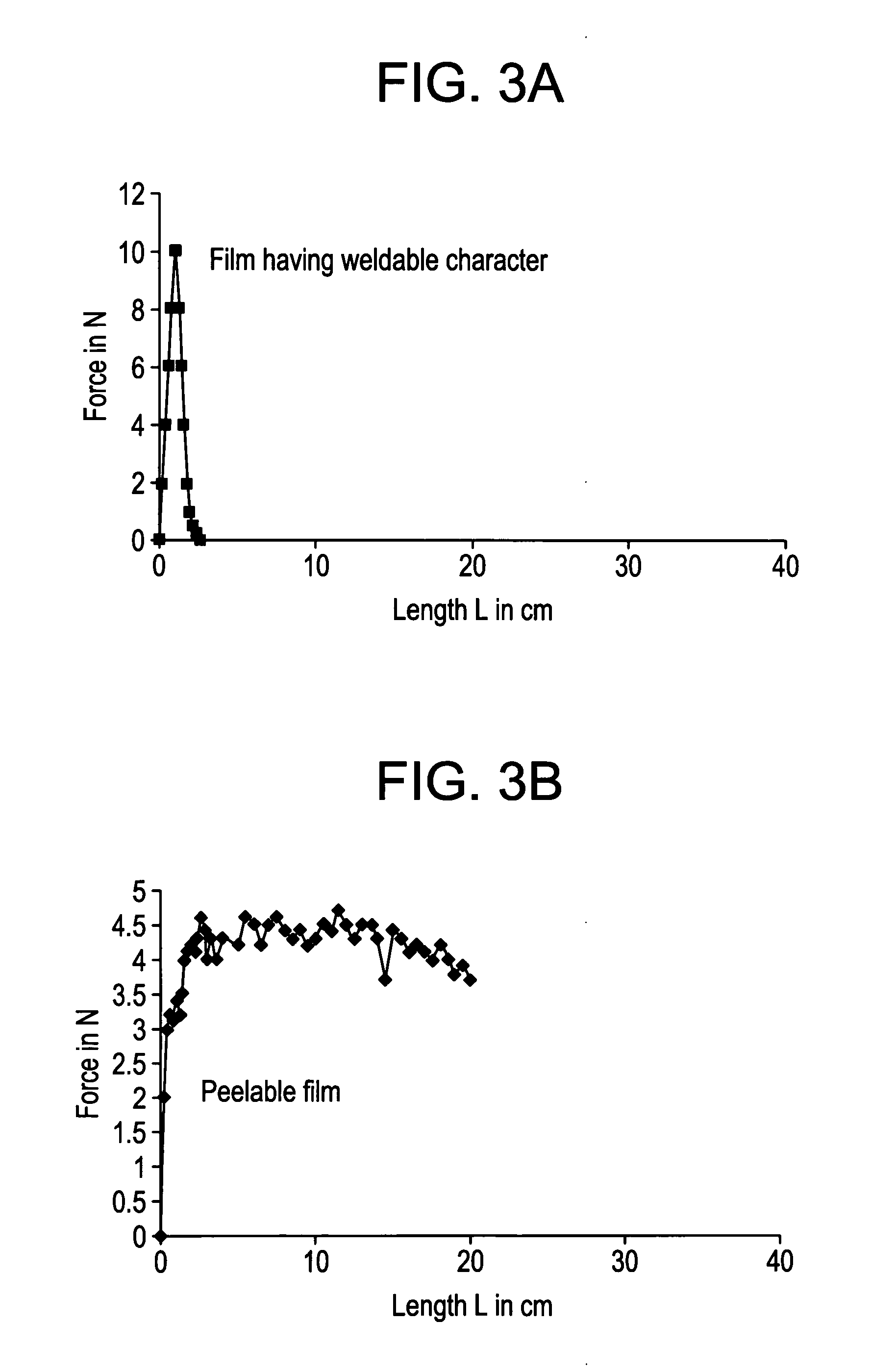Coextruded, hot-sealable and peelable polyester film, process for its production and its use
a technology of polyester film and peeling film, which is applied in the field of coextruded, peelable, transparent and biaxially oriented polyester film, can solve the problems of force falling immediately back to zero, undesired film destruction on removal from the tray, poor adhesion properties of the pet tray,
- Summary
- Abstract
- Description
- Claims
- Application Information
AI Technical Summary
Benefits of technology
Problems solved by technology
Method used
Image
Examples
example 1
Chips of polyethylene terephthalate were fed to the extruder for the base layer (B). Chips of polyethylene terephthalate and particles were likewise fed to the extruder (twin-screw extruder) for the nonsealable top layer (C). In accordance with the process conditions listed in the table below, the raw materials were melted and homogenized in the two respective extruders.
In addition, a mixture consisting of polyester I, polyester II and anti-PET polymer was prepared for the heatsealable and peelable top layer (A). In table 2, the particular proportions of the dicarboxylic acids and glycols present in the two polyesters I and II in mol % and the particular proportions of the components present in the mixture in % by weight are specified. The mixture was fed to the twin-screw extruder with degassing for the sealable and peelable top layer (A). In accordance with the process conditions detailed in the table below, the raw materials were melted and homogenized in the twin-screw extrud...
example 2
In comparison to example 1, the composition of the mixture for the sealable top layer (A) was changed. The composition of the individual components remained unchanged in comparison to example 1. The mixture now consists of the following raw material proportions:
polyester I =20% by weight,polyester II =70% by weight andanti-PET polymer =10% by weight.
As a consequence of the higher proportion of polyester II in the mixture, the process parameters were modified in the longitudinal stretching. The new conditions for the longitudinal stretching are listed in the table below:
Longitudinal stretchingHeating temperature70-92° C.Stretching temperature94° C.Longitudinal stretching ratio3.7
The minimum sealing temperature of the film with respect to the CPET trays is now 146° C. For all sealing temperatures, the films exhibited the desired peeling off from the tray according to FIG. 3b. The seal seam strengths measured are listed in column 3. For all sealing temperatures, peelable films w...
example 3
In comparison to example 2, the top layer thickness of the sealable layer (A) was raised to 3.0 μm. The diameter of the filler was raised to 4.0 μm. The minimum sealing temperature of the film with respect to CPET trays is now 144° C. For all sealing temperatures, the films exhibited the desired peeling off from the tray according to FIG. 3b. The seal seam strengths measured are listed in column 3. For all sealing temperatures, peelable films were again obtained. The seal seam strengths of the inventive films are somewhat higher than in example 2. A somewhat lower opacity of the film was measured; the handling and the processing performance of the film were as in example 1.
PUM
 Login to View More
Login to View More Abstract
Description
Claims
Application Information
 Login to View More
Login to View More - R&D
- Intellectual Property
- Life Sciences
- Materials
- Tech Scout
- Unparalleled Data Quality
- Higher Quality Content
- 60% Fewer Hallucinations
Browse by: Latest US Patents, China's latest patents, Technical Efficacy Thesaurus, Application Domain, Technology Topic, Popular Technical Reports.
© 2025 PatSnap. All rights reserved.Legal|Privacy policy|Modern Slavery Act Transparency Statement|Sitemap|About US| Contact US: help@patsnap.com



